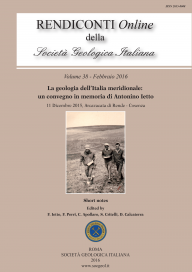
Diagnostic analysis of bricks from the underwater archaeological site of Baia (Naples, Italy): preliminary results
Michela Ricca (a), Valeria Comite (a), Mauro Francesco La Russa (a) & Donatella Barca (a)
(a) Dipartimento di Biologia, Ecologia e Scienze della Terra (DiBEST), Università della Calabria, Via Pietro Bucci - 87036, Arcavacata di Rende (CS), Italy. Corresponding author. E-mail: michela.ricca@unical.it
DOI: https://doi.org/10.3301/ROL.2016.24
Volume: 38/2016
Pages: 85-88
Abstract
In this multidisciplinary contribution, several diagnostic tests were carried out in order to characterize the archaeological materials, as well as the alteration and degradation products, present in the submerged archaeological site of Baia (Naples, South Italy). Founded by the Romans in the 1st century B.C., this archaeological area represents one of the greatest evidence of Roman architecture and it includes ancient ruins whose structures range from maritime villas and imperial buildings. Fragments of bricks belonging from walls of a monumental villa, called Villa con ingresso a protiro, were studied with different and complementary techniques. In particular, polarized optical microscopy and X-ray diffraction were performed in order to characterize the raw materials employed for their production, while to evaluate the state of conservation and identify the biodeteriogen agents, samples were studied under a stereomicroscope and scanning electron microscopy. Analytical data highlighted that: a) different types of bricks were used in the ancient roman city of Baia; b) the presence of several degree of biological colonisation is mainly correlated to the type of temper used for their production.
Keywords
Get Full Text